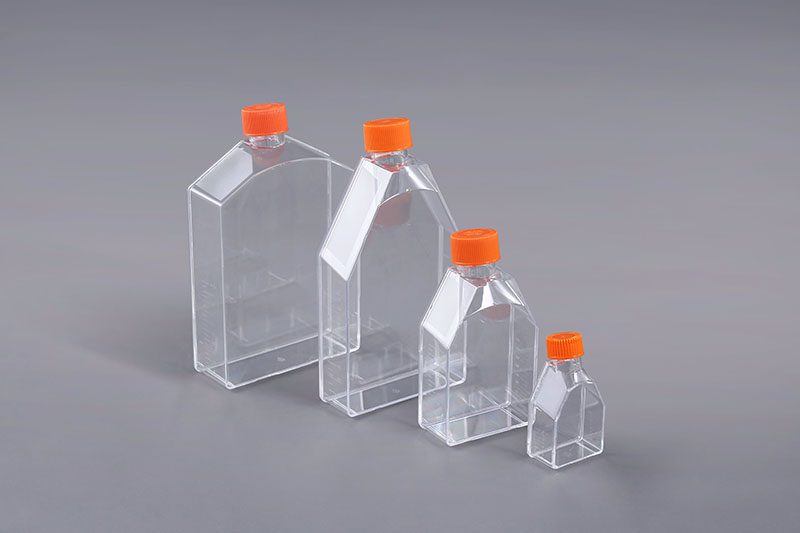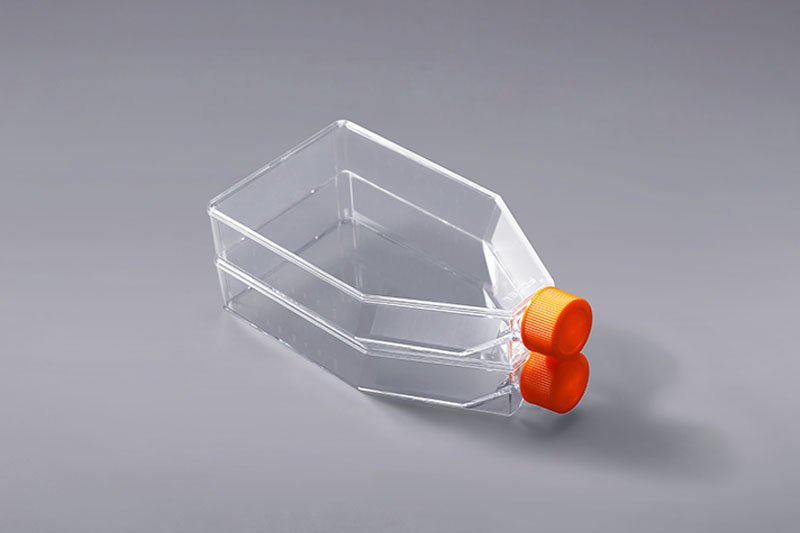Adherent cells are currently the main type of cell culture. They need to be adsorbed on the surface of the support and rely on the attachment factors secreted by themselves or provided in the culture medium to grow and multiply on the surface. Sometimes we find that the cells in the cell culture flasks cannot adhere to the wall. What is causing this?
Cell adhesion is a reaction to adapt to the environment. Cells with a density greater than the culture medium will settle on the bottom surface. If the cells are to survive, they must improve this environment, secrete extracellular matrix, improve the bottom surface structure, and then naturally attach to the bottom surface. On it. Cells with a density less than water will float on the liquid surface, so it is impossible to stick to the bottom surface, but if the culture solution is filled up so that the cells can contact the upper wall of the cell culture flasks, they can also stick to the wall. If the cells do not adhere to the wall, it can be analyzed from the following aspects:
1. The most important thing for the passage of cells is the time of trypsin treatment: the cells themselves are agglomerated if they are not digested enough; if the trypsin treatment is too long, it is easy to cause cell membrane protein damage, make the cells not adhere to the wall tightly, and the three-dimensional effect of observation under the microscope is not strong. , And even cause cell death in severe cases.
2. Lack of adhesion factors: the serum contains adhesion promoting factors, and the lack of such adhesion promoting factors in the serum-free medium process will reduce the adhesion effect of cells a lot.
3. Contamination of mycoplasma or bacteria.
4. Improper configuration and storage of the culture solution, such as excessively alkaline pH and too little Gln.
5. The recovered cells are not in good condition, they are aging and lose their adhesion.
6. The number of inoculated cells is too small to secrete enough extracellular matrix.
7. The processing speed during resuscitation is too slow and the resuscitation process is improper.
Taken together, the non-adherence of adherent cells is mainly due to the above reasons. In addition, plastic cell culture flasks that have not undergone TC treatment on the surface will also affect the adhesion performance of the cells.
The FAI climbed 5.9 percent year-on-year in the first 11 months of 2018, quickening from the 5.7-percent growth in Jan-Oct, the National Bureau of Statistics (NBS) said Friday in an online statement.
The key indicator of investment, dubbed a major growth driver, hit the bottom in August and has since started to rebound steadily.
In the face of emerging economic challenges home and abroad, China has stepped up efforts to stabilize investment, in particular rolling out measures to motivate private investors and channel funds into infrastructure.
Friday's data showed private investment, accounting for more than 60 percent of the total FAI, expanded by a brisk 8.7 percent.
NBS spokesperson Mao Shengyong said funds into weak economic links registered rapid increases as investment in environmental protection and agriculture jumped 42 percent and 12.5 percent respectively, much faster than the average.
In breakdown, investment in high-tech and equipment manufacturing remained vigorous with 16.1-percent and 11.6-percent increases respectively in the first 11 months. Infrastructure investment gained 3.7 percent, staying flat. Investment in property development rose 9.7 percent, also unchanged.
 English
English




















































